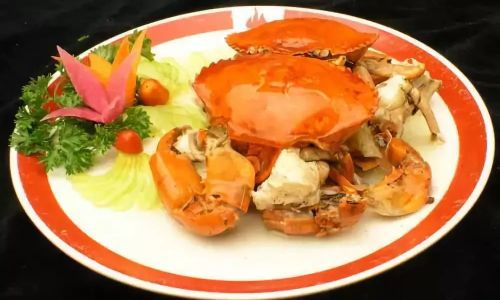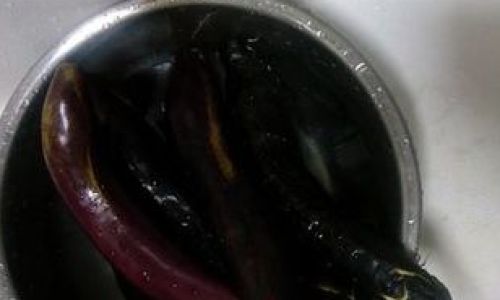Table of content
Crab, with its sweet, briny flesh and delicate texture, has captivated food lovers for centuries. Yet, for many, the prospect of tackling this armored sea creature can be intimidating. The struggle to crack its shell, extract every morsel of meat, and avoid a messy ordeal often overshadows the culinary reward. This guide aims to demystify the art of eating crab, offering step-by-step techniques, cultural insights, and creative recipes to transform this challenge into a delightful experience. Whether you’re a novice or a seasoned seafood enthusiast, mastering the nuances of crab consumption will elevate your dining adventures.

Understanding Crab Anatomy
Before diving into the eating process, it’s essential to familiarize yourself with a crab’s structure. A typical crab has a hard exoskeleton (shell) protecting its body, ten legs (two of which are claws), and a central section called the carapace. The meat is found in the claws, legs, and the body cavity. Different crab species—such as Dungeness, blue crab, king crab, and snow crab—vary slightly in size, shell thickness, and meat distribution, but the basic eating principles remain consistent.
Essential Tools for Crab Feasting
Eating crab efficiently requires the right tools. While purists may prefer their bare hands, using specialized utensils can streamline the process:
- Crab Cracker: A sturdy, nutcracker-like tool designed to split claws and legs without shattering the meat.
- Seafood Pick: A thin, pointed implement to extract meat from crevices.
- Crab Mallet: A small hammer used to gently crack harder shells.
- Bib and Bowl: To catch shells and juices, keeping your workspace tidy.
- Butter Warmer: For melting butter or sauces to accompany the meat.
Step-by-Step Guide to Eating Crab
Preparing the Crab
If cooking at home, start by steaming or boiling the crab until the shell turns bright red (15–20 minutes for most varieties). Allow it to cool slightly before handling. For pre-cooked crab, ensure it’s thoroughly reheated.
Breaking Down the Carapace
- Twist off the legs and claws: Grip the body firmly and twist each leg at the joint to separate it.
- Remove the apron: Flip the crab over and pry off the small, triangular flap (the apron).
- Lift the top shell: Insert a knife or your thumb into the gap left by the apron and lift off the carapace. Discard the feathery gills (called “devil’s fingers”) and the spongy internal organs.
Extracting Body Meat
The central body cavity contains lumps of white meat. Use a seafood pick or fork to scrape it out, paying attention to the grooves along the shell. Some species, like Dungeness crab, also have meat in the chambers between the legs.
Cracking Claws and Legs
- Claws: Use the crab cracker to apply gentle pressure near the joint, then twist to split the shell. Extract the meat in one piece if possible.
- Legs: For thicker legs, crack them with a mallet or roll them under a rolling pin to loosen the shell. For thinner legs, bite gently to create a slit and pull out the meat.
Savoring Every Bite
Dip the meat into melted butter, garlic aioli, or a tangy cocktail sauce. Pair with lemon wedges, crusty bread, or a crisp salad to balance the richness.

Popular Crab Varieties and Their Nuances
Dungeness Crab
Found along the Pacific coast, this crab is prized for its sweet, tender meat. Its shell is relatively easy to crack, making it ideal for beginners.
Blue Crab
Native to the Atlantic, blue crabs are smaller but flavorful. Their meat is often used in dishes like Maryland crab cakes.
King Crab
Known for its long, spiky legs, king crab meat is firm and succulent. The legs require a mallet to crack but offer generous portions.
Snow Crab
Slightly sweeter than king crab, snow crab legs are thinner and easier to break. They’re a staple in seafood boils.
Crab Etiquette: Dining Like a Pro
- At a Restaurant: If served a whole crab, use the provided tools and avoid stacking shells on your plate. Ask for a bib if needed.
- Casual Settings: Embrace the messiness! Lay down newspaper or parchment paper for easy cleanup.
- Formal Occasions: Use a small fork to extract meat delicately, and avoid slurping or loud cracking noises.
Creative Crab Recipes
Classic Steamed Crab with Garlic Butter
- Ingredients: 4 live crabs, 1 cup melted butter, 4 garlic cloves (minced), lemon wedges.
- Instructions: Steam crabs for 15 minutes. Mix butter and garlic, then serve as a dip.
Crab Cakes with Remoulade Sauce
- Ingredients: 1 lb lump crab meat, ½ cup breadcrumbs, 2 eggs, 1 tbsp mayo, 1 tsp Old Bay seasoning.
- Instructions: Form into patties and fry until golden. Serve with a creamy remoulade.
Spicy Crab Bisque
- Ingredients: 2 cups crab stock, 1 cup tomato puree, 1 onion (diced), 1 tbsp Cajun seasoning.
- Instructions: Sauté onion, add stock and seasonings, then blend until smooth. Stir in crab meat before serving.
Crab and Avocado Salad
- Ingredients: 1 cup crab meat, 1 avocado (diced), ¼ cup cilantro, lime juice, salt.
- Instructions: Toss gently and serve chilled.
Health Benefits of Crab
Crab is not only delicious but also nutritious. It’s low in fat and calories yet rich in:

- Protein: Essential for muscle repair and immunity.
- Omega-3 Fatty Acids: Supports heart and brain health.
- Vitamin B12: Aids in red blood cell formation.
- Selenium: An antioxidant that fights cellular damage.
However, moderation is key due to its cholesterol content.
Avoiding Common Mistakes
- Overcooking: Results in rubbery meat. Steam until the shell turns red, then check for doneness.
- Under-Seasoning: Crab pairs well with bold flavors like Old Bay, paprika, or citrus.
- Wasting Meat: Use picks or forks to scrape every bit from the shell.
- Ignoring Sustainability: Choose crab labeled as responsibly sourced to protect marine ecosystems.
Conclusion
Eating crab is as much an art as it is a culinary adventure. By mastering the techniques of cracking, picking, and savoring, you’ll unlock a world of flavor while appreciating the craftsmanship of nature’s design. Whether you’re hosting a seafood boil, dining at a waterfront restaurant, or experimenting with recipes at home, crab offers a versatile, rewarding experience. So grab your tools, embrace the mess, and relish every succulent bite—your journey to crab-eating confidence starts here.
Final Tip: The best way to learn is to practice. Invite friends over for a crab feast, and don’t be afraid to get your hands dirty. After all, the most memorable meals are often the ones that leave you smiling—and maybe a little butter-smudged.





0 comments